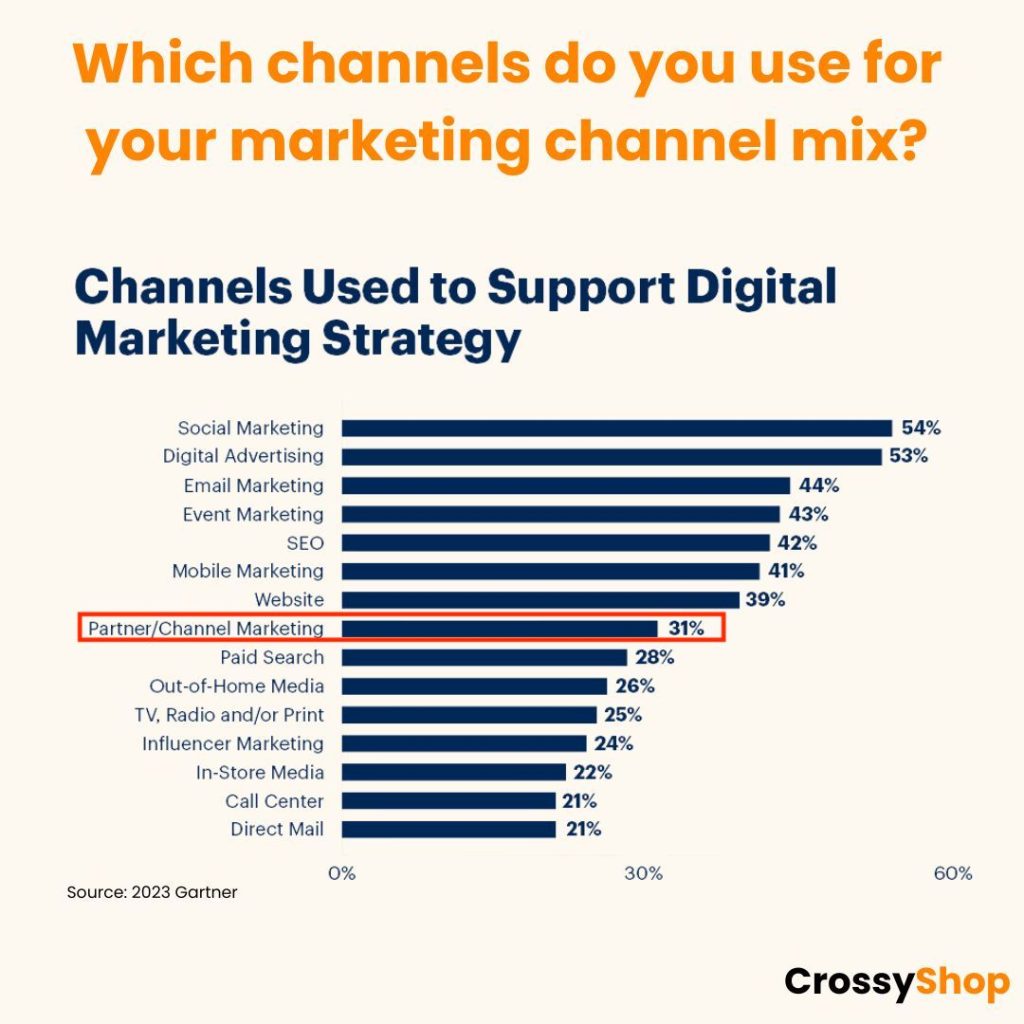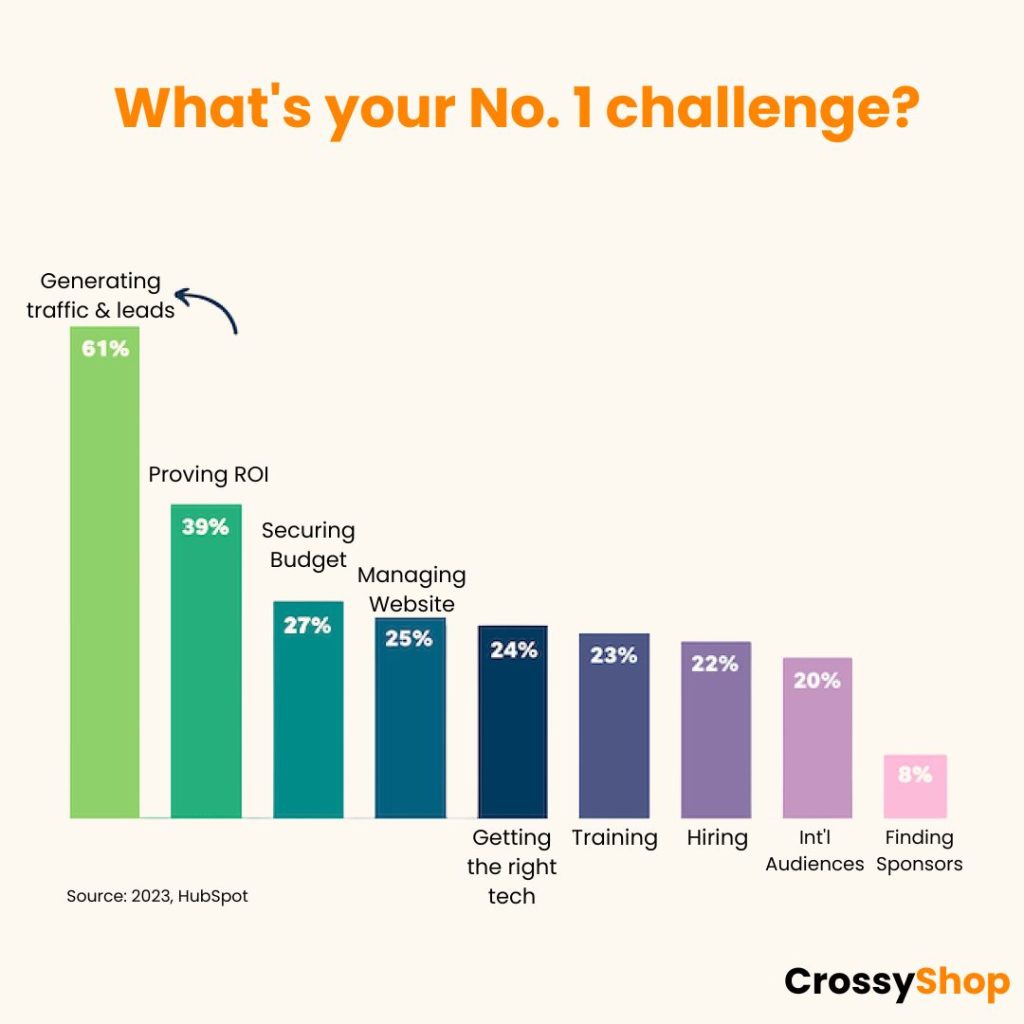How to Use E-Commerce Partnership Tools to Reduce Marketing Costs
Category partnerships

Posted by Wei T.
Growth Marketing Expert

In today's rapidly evolving digital landscape, e-commerce has become more than just a buzzword—it's a foundational pillar for businesses worldwide.
At the heart of every successful online store, like CrossyShop, is a meticulously crafted marketing strategy. It's through these strategic efforts that brands create their voice, reach their audience, and drive conversions.
However, with the rising competitiveness of the e-commerce domain, there comes an accompanying surge in marketing costs. From pricey pay-per-click campaigns to hefty influencer collaboration fees, the expenses can quickly add up, leaving many businesses grappling to maintain profitability.
But there's a glimmer of hope on the horizon: e-commerce partnership tools. These innovative solutions offer businesses the opportunity to collaborate, share resources, and tap into new markets, often at a fraction of traditional marketing costs.
Through smart collaborations and the leveraging of shared tools and resources, brands can tackle the challenges posed by spiralling expenses and create a more sustainable and efficient promotional framework.
The Power of Partnerships in E-commerce
E-commerce has seen a meteoric rise in the past decade, paving the way for businesses to reach audiences across the globe.
Yet, it's not merely having an online presence that guarantees success. Rather, strategic maneuvers, particularly business partnerships, play a pivotal role.
The Significance of Business Collaborations

In the world of e-commerce, business collaborations aren't just a trend—they're a necessity.
They allow companies to pool resources, share knowledge, and increase market penetration. By joining forces, businesses can achieve more than they could alone.
What Makes a Partnership Strong
Partnerships, though fruitful, can be challenging to navigate. So, what makes one partnership thrive while another falters? Key pillars include:
- Trust and Mutual Respect - Without trust, even the most profitable partnerships can crumble.
- Aligned Goals and Objectives - Both parties need to understand and agree upon the direction they're heading.
- Transparent Communication - Open dialogue ensures that all stakeholders remain on the same page.
- Complementary Strengths and Resources - Leveraging each partner's unique skills creates a more formidable alliance.
Why is Partnership Important in Business
Beyond the aforementioned pillars, partnerships hold intrinsic value in business:
- Sharing of Resources and Expertise - Pooling resources can lead to faster growth and innovation.
- Access to New Customer Bases - Through partnerships, businesses can tap into new market segments.
- Risk Mitigation - Shared responsibilities can help buffer against market volatility.
- Enhanced Innovation and Problem-Solving - Two heads, as they say, are often better than one.
Difference and Similarity Between Partnerships and Joint Ventures
While the terms 'partnership' and 'joint venture' are often used interchangeably, they have distinct differences.
A partnership usually entails a long-term legal agreement where businesses come together for mutual benefits. On the other hand, joint ventures are typically short-term projects with specific goals.
| Aspect | Partnership | Joint Venture |
|---|---|---|
| Duration | Long-term | Project-based or short-term |
| Legal Binding | Formal agreement, often indefinite | Specific to the project's duration |
| Purpose | Broad mutual benefits | A formal agreement, often indefinite |
However, both partnerships and joint ventures emphasize collaboration, shared risks, and joint decision-making.
Cost-Efficient Methods in E-commerce Promotion
Navigating the vast e-commerce landscape requires strategic marketing. However, the increasing cost of advertising is a hurdle many businesses face. Let's dive into cost-efficient strategies that e-commerce ventures can employ.
Brand vs. Acquisition Marketing
- Defining Both Strategies
- Brand Marketing: Focuses on building brand awareness and loyalty. It emphasizes creating emotional connections with customers.
- Acquisition Marketing: Aimed at acquiring new customers. It leans heavily on direct response techniques.
- Pros and Cons of Each Strategy
- Brand Marketing: builds long-term customer loyalty and enhances brand reputation might not provide immediate ROI.
- Acquisition Marketing: can provide quick ROI, targets new potential customers might be costlier in the long run, and less focus on loyalty
- How They Influence Marketing Costs
- While brand marketing often requires a more significant initial investment without immediate returns, its long-term ROI can be substantial due to customer loyalty. Acquisition marketing might offer quicker results but can become expensive, especially if customer retention isn't prioritized.
Capture High-Intent Traffic Approach
 Understanding and targeting high-intent traffic can significantly reduce marketing costs. But what exactly is it?
Understanding and targeting high-intent traffic can significantly reduce marketing costs. But what exactly is it?
- The Meaning of High-Intent Traffic: These are users actively looking to make a purchase or perform a specific action. They're in the decision phase of the buyer's journey.
- Techniques to Target and Capture This Traffic:
- SEO optimized for transactional keywords.
- Remarketing campaigns targeting cart abandoners.
- User reviews and testimonials to build trust.
- The Cost Benefits of Focusing on High-Intent Users: By targeting users ready to convert, businesses can reduce their cost-per-acquisition, leading to a higher marketing ROI. Lastly, while exploring these techniques, it's crucial to understand the inherent costs of each method. However, with the right approach to e-commerce promotions, businesses can strike a balance between expenditure and effectiveness.
E-Commerce Partnership Tools: An Overview
- Definition and Significance: In the realm of e-commerce, partnership tools refer to platforms, software, or strategies that facilitate collaboration between businesses to amplify their marketing efforts. Rather than viewing other businesses as competitors, these tools allow brands to see the potential benefits of collaboration. When leveraged correctly, partnership tools can significantly reduce marketing expenses, broaden the customer base, and pave the way for mutual growth.
- Types of Tools and Their Role in Boosting Sales:
- Affiliate Marketing Platforms: Connect businesses with influencers or bloggers who promote products in exchange for a commission.
- Joint Promotion Tools: Allow two businesses to co-market products or services.
- Cross-Selling Platforms: Tools like automated cross-selling on CrossyShop recommend complementary products.
- Shared Loyalty Programs: Platforms where customers earn rewards across multiple brands. Using these tools effectively can boost brand visibility, provide customer value, and drive sales upwards.
Strategies for Successful Online Partnership Marketing
- The Importance of the Online Ecosystem: The online ecosystem is a vast interconnected web. Brands interact here, consumers discover products, and marketing happens. Strategic partnerships can amplify a brand's message, reach, and conversions.
- Tactics and Best Practices:
- Identify complementary businesses.
- Set clear partnership goals.
- Maintain open and regular communication.
- Monitor and adjust using analytics. For a deeper understanding, check out this guide on online partnership marketing.
Steps to Forge Successful Partnerships
- Understanding Mutual Benefits: Identify what both parties stand to gain from the partnership.
- Approaching Potential Partners:
- Research their business.
- Use personalized outreach.
- Build a relationship before jumping into business. For a step-by-step guide, see how to create effective partnerships.
Automated Cross-Selling: A Win-Win for Partners
- Definition of Cross-Selling: Promoting complementary products based on a customer's current purchase.
- The Impact of Automation on Cross-Selling:
- Deliver real-time product recommendations.
- Personalize the shopping experience.
- Maximize sales without manual intervention. For more insights, visit automated cross-selling on CrossyShop.
Conclusion
Navigating the e-commerce landscape requires more than a stellar product. E-commerce partnership tools offer a solution to rising marketing costs. Brands can collaborate, innovate, and thrive. For deeper insights into e-commerce collaborations, CrossyShop is here to guide. Dive into more insights on the CrossyShop blog.